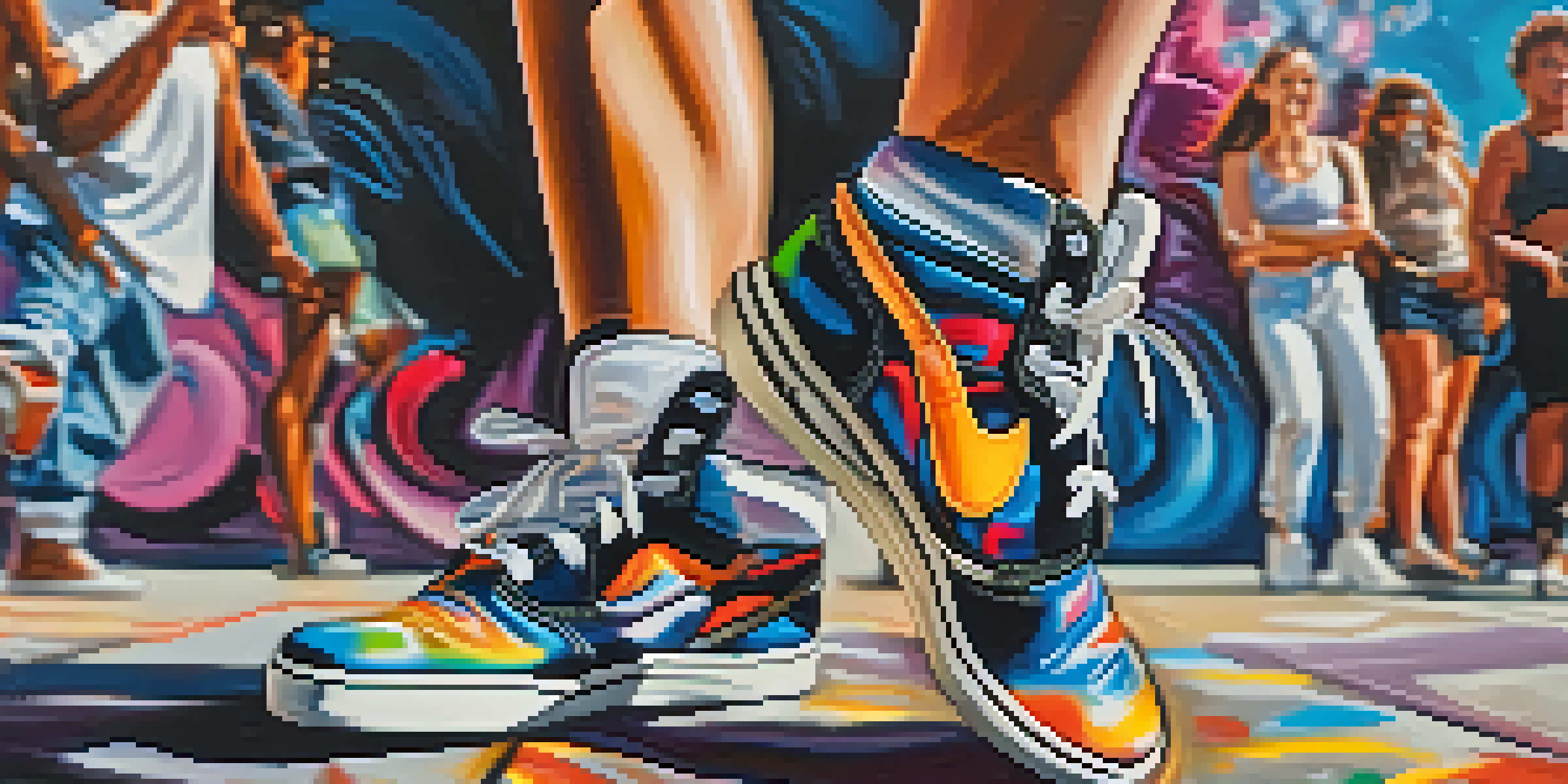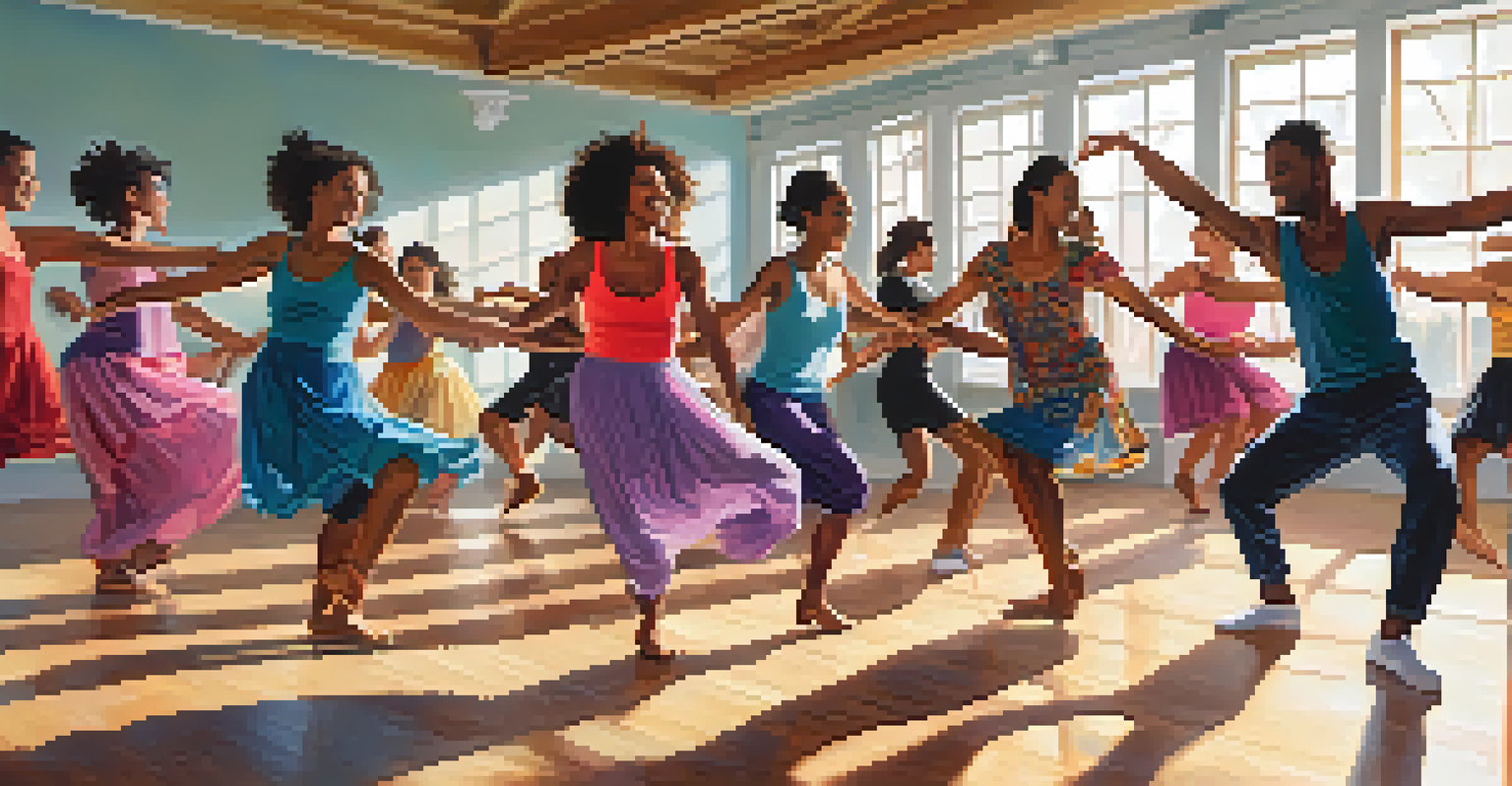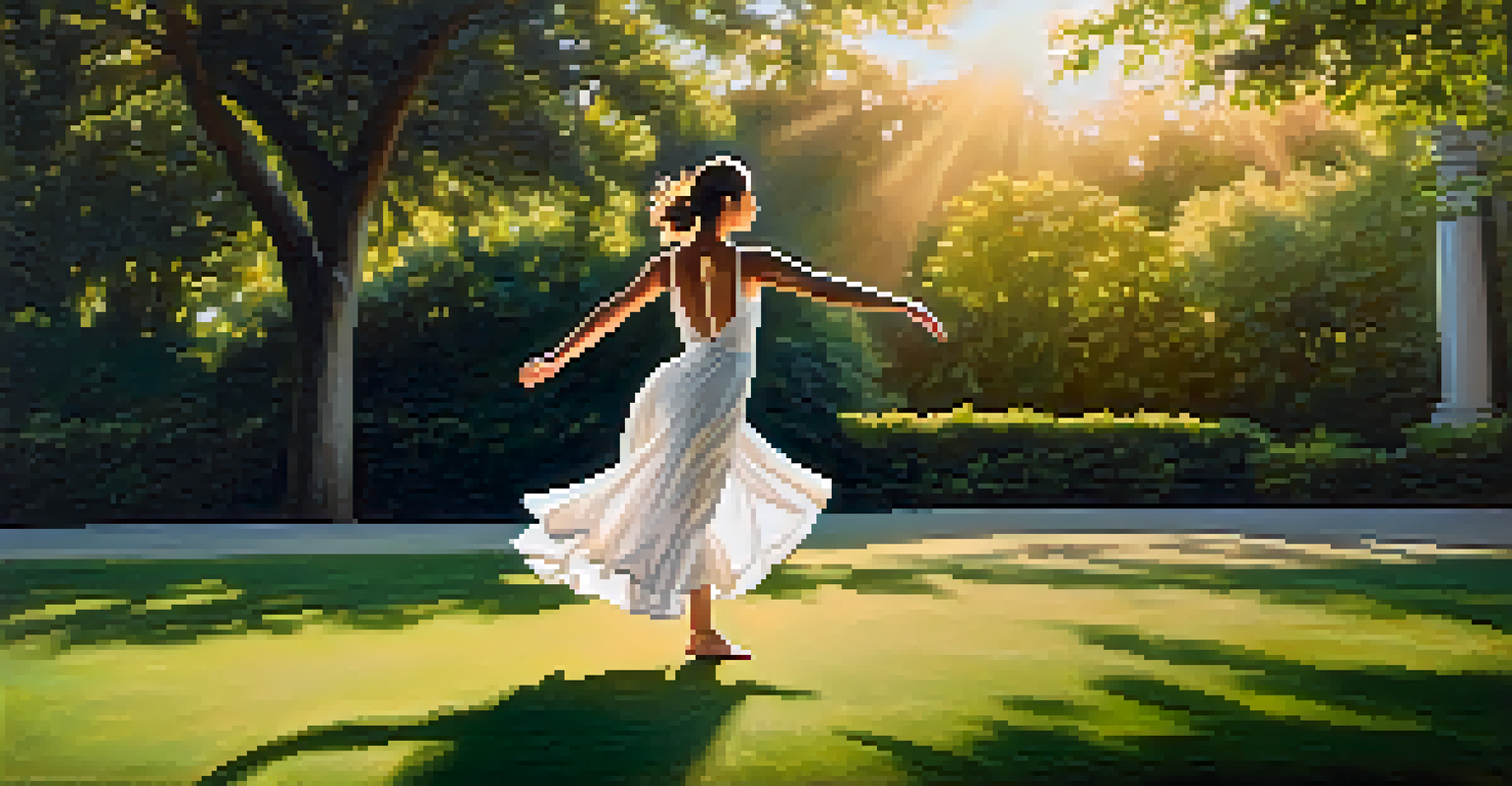Dance as a Language: Communicating Beyond Loneliness

Understanding Dance as a Universal Language
Dance is often described as a universal language, capable of expressing emotions that words sometimes fail to capture. Through movement, individuals can convey feelings of joy, sorrow, and everything in between, allowing for a deeper connection with others. For instance, a simple sway or a dramatic leap can tell a story that resonates with anyone watching, regardless of their background or language. This ability to communicate without words makes dance a powerful tool for building community and understanding.
Dance is the hidden language of the soul.
Every culture has its own dance forms, from ballet to hip-hop, each with unique styles and meanings. Yet, despite these differences, the essence of dance remains the same: it is a medium for expression. When we watch a dancer perform, we often find ourselves relating to their emotions, feeling a sense of empathy that transcends spoken language. This shared experience can bridge gaps between individuals, fostering connections that alleviate feelings of loneliness.
Moreover, dance encourages individuals to explore their identity and express their thoughts and feelings. Whether through improvisation or structured choreography, the act of moving can be liberating, allowing people to share parts of themselves that they might keep hidden in everyday interactions. In this way, dance becomes not just a performance but a dialogue between the dancer and the audience, forging bonds that combat isolation.
The Emotional Connection of Dance
One of the most remarkable aspects of dance is its ability to evoke emotion. When we watch a performance, we are often captivated by the dancer's ability to express feelings that resonate with our own experiences. This emotional connection can foster a sense of belonging, reminding us that we are not alone in our feelings. For example, a poignant dance about loss can bring comfort to someone grieving, creating a shared space of understanding.

Dance can also serve as a form of therapy, helping individuals process complex emotions. Dance therapy, for instance, encourages participants to express themselves through movement, providing a safe outlet for feelings like sadness or frustration. As they move, dancers can explore their emotions physically, often leading to breakthroughs that verbal communication may not achieve. This unique form of expression can be especially beneficial for those who struggle with loneliness.
Dance as a Universal Expression
Dance transcends language barriers, allowing individuals to express emotions and foster connections through movement.
Moreover, when people come together to dance, whether in a class or at a social event, they are engaging in a shared experience that fosters connection. The act of moving in sync with others creates a sense of unity and collective joy. In these moments, individuals can feel less isolated, as they become part of something larger than themselves, celebrating life through the art of movement.
Dance as a Tool for Social Connection
In many cultures, dance is a communal activity that brings people together, making it an effective tool for social connection. Group dances, such as circle dances or line dancing, encourage participation and create a sense of belonging among participants. These shared experiences can lead to new friendships and strengthen existing relationships, reducing feelings of loneliness in the process.
Dance is a way to find yourself and lose yourself all at the same time.
Take community dance classes, for example: they provide a welcoming environment where people of all skill levels can come together to learn and grow. As participants move together, they engage in laughter and shared challenges, cultivating camaraderie. This supportive atmosphere can be particularly beneficial for individuals who may feel isolated due to various life circumstances, offering them a chance to connect with others.
Additionally, dance events, like flash mobs or community performances, allow individuals to contribute to a collective goal. The excitement of working together towards a shared performance creates bonds and memories that can last a lifetime. These connections not only combat loneliness but also foster a sense of community pride, reminding participants that they are part of something bigger.
Finding Solace in Solo Dance
While group dance can foster connection, solo dance also offers a powerful means of coping with loneliness. Dancing alone allows individuals to explore their feelings without the pressure of an audience, providing a safe space for self-expression. This personal practice can serve as a form of meditation, helping dancers connect with their inner selves and process their emotions more deeply.
For many, solo dance can be a joyful escape, a way to let go of stress and embrace the present moment. Whether twirling in a living room or freestyling in a park, these personal dance sessions can uplift spirits and create a sense of freedom. This liberation from everyday worries can be especially important for those feeling lonely, as it provides an opportunity to reconnect with oneself.
Dance Promotes Mental Health
Engaging in dance boosts mood, promotes mindfulness, and encourages social interaction, all of which are vital for mental well-being.
Moreover, recording solo dance sessions and sharing them online can foster a sense of community. Social media platforms allow individuals to showcase their unique styles and connect with others who share similar passions. This digital interaction can create a sense of belonging, reminding dancers that even in their solitary moments, they are part of a larger community that appreciates the art of movement.
Dance and Mental Health: A Healing Connection
The link between dance and mental health is well-documented, with numerous studies highlighting its benefits for emotional well-being. Engaging in dance can release endorphins, the body's natural mood lifters, providing an instant boost in happiness. This physiological response can be particularly helpful for those battling loneliness or depression, offering a tangible way to alleviate negative feelings.
Moreover, dance encourages individuals to be present in their bodies, promoting mindfulness. As dancers focus on their movements, they often find themselves immersed in the experience, reducing anxiety and fostering a sense of peace. This practice of being in the moment can help individuals break free from the cycle of negative thoughts that often accompany loneliness.
Dance also promotes social interaction, which is vital for maintaining mental health. Participating in dance classes or community events can provide essential social support, helping individuals feel connected to others. This connection can be a crucial lifeline for those feeling isolated, reinforcing the idea that they are not alone in their struggles.
The Role of Technology in Dance Communication
In today's digital age, technology has transformed the way we engage with dance, making it easier than ever to connect with others. Online dance classes and tutorials allow individuals to learn new styles from the comfort of their homes, opening up opportunities for self-expression and connection. This accessibility can be particularly beneficial for those who may feel isolated, as they can join a global community of dancers.
Social media platforms also play a significant role in fostering connections among dancers. Sharing videos of performances or dance challenges can create a sense of community, allowing individuals to celebrate each other's progress. This virtual interaction can help combat loneliness, as dancers engage with and support one another, even from a distance.
Technology Enhances Dance Community
Online platforms enable dancers to connect, learn, and collaborate, creating a global community that combats feelings of isolation.
Moreover, technology enables dancers to collaborate across geographical boundaries. Virtual dance projects and online competitions allow individuals to unite their talents and creativity, showcasing their skills to a wider audience. This ability to connect and collaborate with others, regardless of location, enhances the sense of belonging and community that dance can provide.
Conclusion: Dance as a Lifeline Against Loneliness
Ultimately, dance serves as a profound language that transcends words and connects us on a deeper emotional level. Whether through solo practice or communal experiences, the act of dancing can alleviate feelings of loneliness and foster connections that enrich our lives. By embracing dance, we not only express ourselves but also create bonds with others, reminding us that we are part of a larger tapestry of human experience.
As we navigate the complexities of life, dance offers a unique outlet for emotional expression and social connection. It encourages us to be present, to share our stories, and to support one another in our journeys. In a world that can sometimes feel isolating, dance becomes a reminder that we are never truly alone.

So, whether you're hitting the dance floor or swaying in your living room, remember that each movement is a step towards connection. Embrace the language of dance, and let it guide you toward a more connected and fulfilled life.